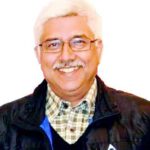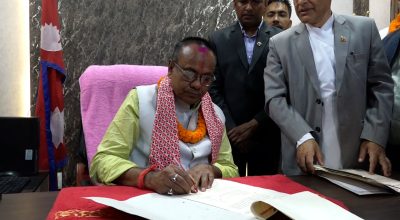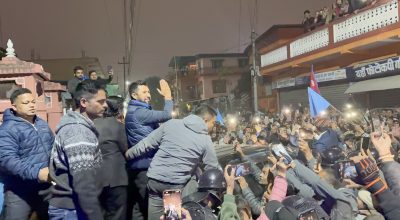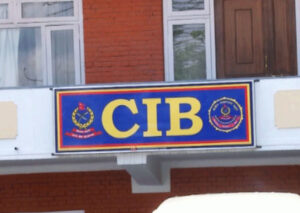
Dr. Kundan Aryal
One of the editors of The Columbia Journalism Review (CJR) cautioned against a message to the US journalists by the supporters of Trump on January 6 at Capitol. Savannah Jacobson, editor and writer, works for a bimonthly magazine, states that the mob of right-wing extremists and indignant live streamers left a note to the journalists who were covering the scene, a message that seemed a harrowing extension of a presidency marked by anti-press virulence. She indicates the danger as she informed the world about the phrase etched into a door “Murder the Media.”
The first newspaper of the USA, Publick Occurrences Both Foreign and Domestick, appeared to the public in 1690, was shut down even before the second issue. However, after the first amendment of Bill of Rights in the constitution, the country has been considered as ideal for the unfettered freedom of press. In most of the countries around the world, even an undergraduate student of journalism can say: the US Congress shall make no law abridging the freedom of speech, or the press, as enshrined in the first amendment of 1791.
Theory of mass society
The USA defeated envy against the mass media long ago. Since the beginning of the 20th century, the theory of mass society had been widely criticised and discredited. Today, with the start of the third decade of the 21st century, as journalists from the US have experienced the harm done to the press at Capitol. This is quite alarming. There are reports that all through that afternoon, reporters in Washington photographed rioters kicking, toppling, stomping and pouring water on their equipment as they yelled and chanted the slogan against the American media. Amidst the outrage, the crowd even tried to burn their instruments.
Explaining the situation after the rise of mass media industries, Baran and Davis, in their seminal work, Mass Communication Theory: Foundation, Ferment and Future, state that mass society theory first appeared late in the 19th century as various social elites struggle to make sense of the disruptive consequences of modernisation. The upper-class politicians perceived that the mass media were symbolic of all that was wrong with modern society. The theory argued that with the decline of intermediary institutions, individuals are deprived of their social ties and are subject to manipulation through mass communication and mass mobilisation. That is why mass newspapers of yellow journalism era, which is believed to be vanished by the early years of the 20th century, were viewed as gigantic, monopolistic enterprises that employed unethical practices to pander to semi-literate audiences.
Envy, discontent, and outright fear that have been demonstrating by Trump and his supporters’ right from the time of his earlier presidential campaign manifest the assumptions in line with the mass society theory. The theory makes several basic assumptions about the role of media and the nature of social change. It assumes that media are a powerful force within society that can subvert essential norms and values and thus undermine the social order. It undermines the efficacy of the general public and assumes that media can directly influence the minds of average people, transforming their views of the social world. Thus, it believes that once people’s thinking is transformed by media, all sorts of bad long-term consequences are likely to result in creating social problems on a vast scale. According to this assumption, average people are vulnerable to the media manipulation.
One of the dangerous assumptions of mass society theory is that the social chaos, initiated by media, will be resolved by the establishment of a totalitarian social order. Baran and Davis argue that this assumption was evolved on the surface again during the 1930s and reached its peak in the US during the 1950s. Mass society is envisioned as an inherently chaotic, highly unstable form of social order that will inevitably collapse and then be replaced by totalitarianism.
Media persons across the world have a belief that the American media have traversed a long way after the era of yellow journalism. It is written over the books that during the 1920s, two of the most powerful yellow journalists did just that, reforming so much that they succeeded in documenting their names in the golden book of the history of journalism rather than a bad record of journalism.
Previously known as giant yellow journalist, Joseph Pulitzer made a will to establish a prize with his earnings after his death to promote professional journalism. Another yellow journalist and competitor to Pulitzer established a foundation. The work of the Hearst Foundation is widely credited with advancing the professionalisation of journalism and raising the ethical standards of the industry. During the decade, as Wilbur Schramm recalls with appreciations, the American Society of Newspaper Editors was formed and pledged to “tell the truth about the news” in its well-known Canons of Journalism. Hence, irresponsible media industry transformed itself for the times to come. Around two years after World War II, Hutchins Commission consolidated the quest of professionalism by recommending the theory of social responsibility. It is widely believed at least on the ground that the US media had thus set a professional standard to discourage any manipulation.
Deadly efforts
The juxtaposition to the noble belief, today the media people in the US have been combating the mass society theory once again at their home. While Trump was addressing his supporters outside the White House, he was saying that he along with his followers do not want to see his election victory stolen by the fake news media. Throughout the 20th century, fear of the spread of totalitarianism grew in most democracies outside the USA. Today, the world is shocked as Trump supporters made a deadly effort to overturn the election results by using violence.
As the CJR editor opines, the events of Capitol left the American press with an immense task. They need to continue to ask tough questions about how officials allowed the break-in to happen in the first place. The first duty of the US media now is to be focused on domestic affairs to prevent the bitter envy against the media in line with mass society theory of the past. (Courtesy: The Rising Nepal)
(Dr. Aryal is associated with the Central Department of Journalism and Mass Communication of Tribhuvan University. [email protected])












